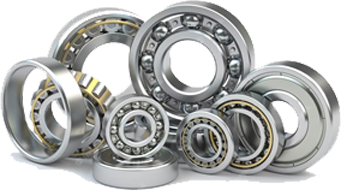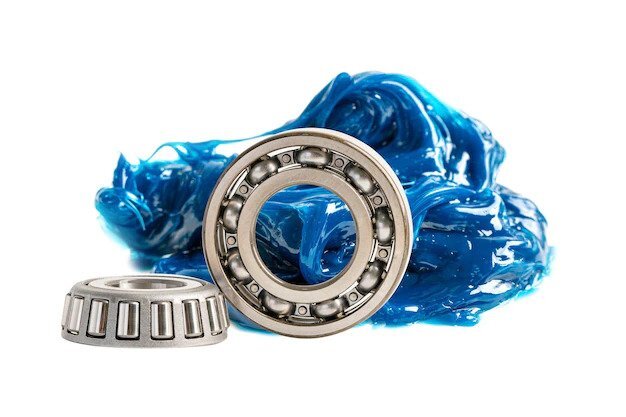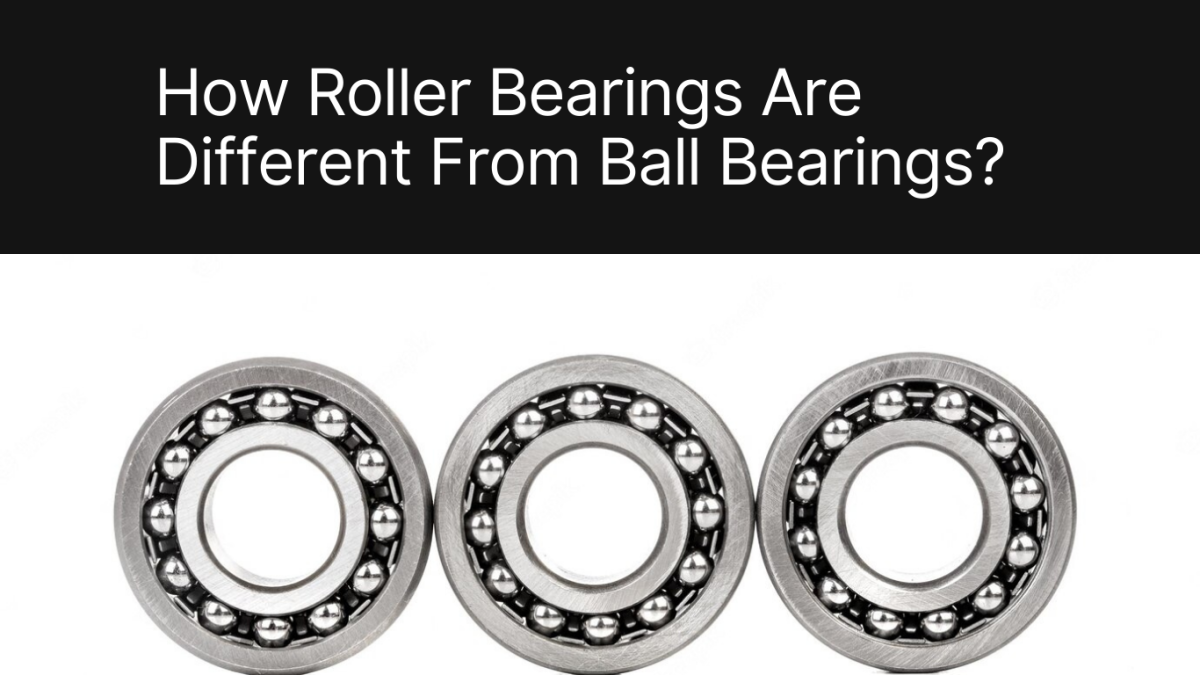
Tag: ball bearings


As the name suggests, electric motor ball bearings are bearings that are used to support electric motors and make them function by transmitting the power between various elements of the machine or rotating the shaft. To help you understand more, This blog covers everything you need to know about electric motor bearings.
The bearings are critical to support varied types of machinery and can work in any kind of environment within the mechanical systems. Electric motor bearings are designed to provide smooth, efficient operation of electric motors. The bearings are made of high-quality materials that can withstand the high speeds and loads exerted by electric motors making them apt for high-performance applications while ensuring an optimal operational life. These bearings are available in a variety of sizes and designs to meet the specific needs of different electric motors.
Electric Motor Ball Bearings: How they Power Electric Motors
Electric motors require reliable solutions to work in an optimum manner. In terms of mechanical characteristics, electric motors are powerful and versatile, making them useful to work in high-performing machinery. Be it machines at the factory or electric vehicles, these bearings can be used in any of the electrical motors to allow rotary motion and transmit the power to make various parts of the machinery function well. The bearings that support these motors need to allow for smooth, quiet operation while providing key features such as high load capacity, long life spans, and low running noise. Electric motor ball bearings are subject to a variety of forces, including radial and thrust loads, as well as vibration and shock. To withstand these forces, bearings must be carefully designed and manufactured. The most common material used for electric motor ball bearings is steel, but other materials such as ceramic or plastic may be used in some applications.Use Case in Real-Time Scenario
The main performance characteristics of electric motor bearings are high load capacity, high-speed operation, high precision positioning, low noise, etc. They are used in the load and speed requirements of the motor. In terms of general applications, they are widely used electronic appliances, large-scale machinery in factories, electric vehicles, railways, wind turbines, etc. Since these machines have different requirements, various types of bearings are used in different scenarios to power them:- Ball Bearings: These are mostly used in non-belted and direct-coupled applications where the motor runs under 150 horsepower speed. Ball bearings are designed specifically to handle both axial and radial loads in varied conditions within the machinery systems. The most common application of these types of electric motor bearings is in AC motors.
- Standard Roller Bearings: These kinds of roller bearings are designed for belted applications and are perfect for radial loads. They are not used to handle axial loads. It also works with motors that operate at a minimum of 150 HP.
- Angular Contact Ball Bearings: These kinds of electric motor bearings are perfect for high-speed rotating applications with axial loads. It can be configured with different types of cage designs and rows.
- Cylindrical Roller Bearings: These roller bearings are perfect for handling extremely high axial loads. Cylindrical roller bearings work efficiently at both medium and high speeds and support several design alternatives as per the mechanical applications. These are mostly used for belt or gear-driven electric motors.
- Deep Groove Ball Bearings: These ball bearings are a perfect match for electrical motors as it is apt for high-speed applications supporting moderate-type axial and radial loads.
- Sealed Bearings: These are specially designed bearings that work in contaminant-prone environments. However, they have a limited life span as they cant be re-lubricated.
- Shielded Bearings: Shielded bearings are specially designed to protect electric motors from dust, dirt, and other debris. They are made with a metal shield that covers the bearing, preventing contaminants from entering and damaging the sensitive components.
Conclusion
This blog has covered various aspects related to electric motor bearing as these bearings are the perfect fit for all kinds of performance needs. Be it any kind of motor, there is always a type of bearing that exists to meet mechanical needs. While choosing a bearing, you should also consider checking out the design and specifications needed to make it work in the best way without compromising any performance issues or incurring functional damage. This is something that makes the machinery or motor work in a reliable manner.
Bearings are available in different shapes, sizes, and types which may be specific for different applications in varied industries. This blog covers some of the points which you should keep in mind before purchasing bearings for industries.
The bearings are high-precision components that power rotating assemblies in mechanical systems. Be it automobiles or aeronautics, it can be used everywhere in any size to accommodate acceleration and reduce friction between different parts or mechanical elements. The bearings are designed in such a way to make it work at high speed without generating much noise and vibration. Since varied industries might require bearings for different applications, you must consider a few things before purchasing them.
Things to Keep in Mind Before Purchasing Bearings for Industries
There can be various factors that might play a role in choosing the right kind of bearing depending upon your applications. Here are some of them to help you understand it right:
- Understanding Operating Conditions: The different applications might require different operating conditions which may vary in aspects such as loads, shaft requirements, the precision of radial positions, shaft strength requirements, etc. In such cases, it is recommended to determine which type of bearings are designed for such applications.
- Bearing Type and Arrangement: Bearing arrangements are a crucial factor to determine the support and location of shafts. It can be an axial or radial location where support may be required to position a shaft. For instance, bearing type and arrangement requirements can range as per location and non-locating bearing combinations where different types of bearings such as deep groove ball bearing or cylindrical roller bearings can be used. So, before planning the applications for bearings, it is crucial to understand which type of bearing and arrangement is required.
- Bearing Loads: It can be referred to as transferring of force from bearing to other rolling elements or bearing rings. The load generally can be axial, radial, or combined load. During the process of choosing a bearing for industrial application, it is crucial to first understand the type of the acting load and then plan which types of bearings might suit well in such an application.
- Considering Bearing Size: The bearing size should be adequate and precise in terms of its application. If bearing size is not considered in the right manner then it might result in rolling contact fatigue, breakdown, and deformation or might also decrease its service life.
- Lubrication Criteria While Selecting Bearing: It is also important to consider lubricating criteria while choosing the type of bearings. By referring to lubricant criteria, it suggests which type of lubricants such as oil or grease will be used in bearings.
- ISO Tolerance Classes: It signifies the tolerance capability of bearing under varied performing conditions. To understand it better, The ISO 492 Class 5 standard signifies the ability of a particular bearing to withstand tolerance limits while using it for high-performing or high-speed rotational applications.
- Bearing Internal Clearance: The bearing internal clearance defines how much a bearing ring can move relative to other rings in radial or axial directions. It signifies the operation of the bearing in a satisfactory manner without any constraints. This is also one of the key factors to consider while choosing bearings for industrial applications.










